Third component layout: The 3-Wheelers with rear-engine and a single-rear driving wheel. Their rear engine and single rear wheel assembly usually comes from a regular 2-Wheel motorcycle.
The 1977 Phantom was among the first well made ones:
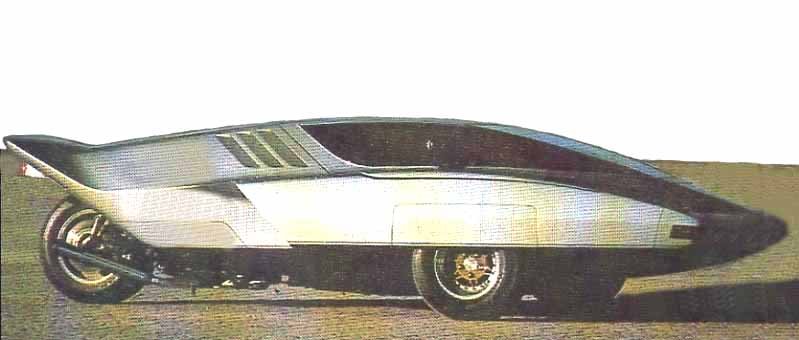
This group also includes the Doran and the Tri-Magnum:

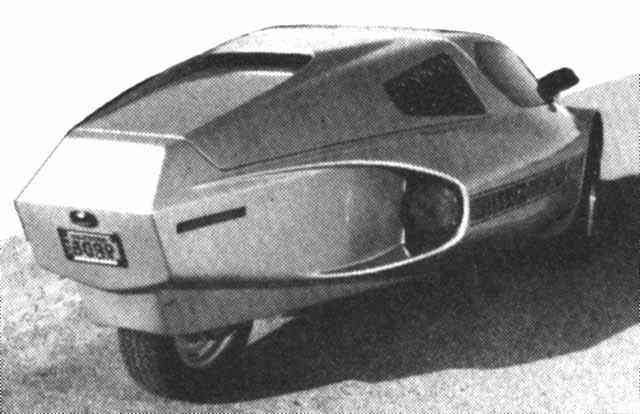
It also includes the FireAero and even Bill Badsey’s Fun Machine:
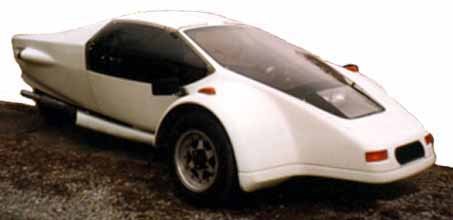

More recently, Grinnall’s Scorpion appeared in England:

The same concept was used by Daniel Campagna to build his first 3-Wheeler:

The aesthetics were greatly improved by Designer Paul Deutschman, which gave the T-Rex:

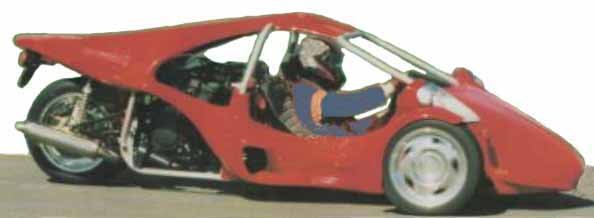
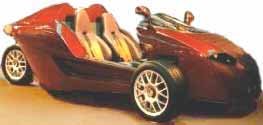
This third component layout also includes the Cyclone at the right. It was developed by a team of engineering students in Sherbrooke and design students in Montreal. The Cyclone is equipped with a snowmobile engine that drives a belt and variable sheave transmission:
Other 3-Wheelers similar to the T-Rex have also been fabricated by enthusiasts, like the G-Max below:

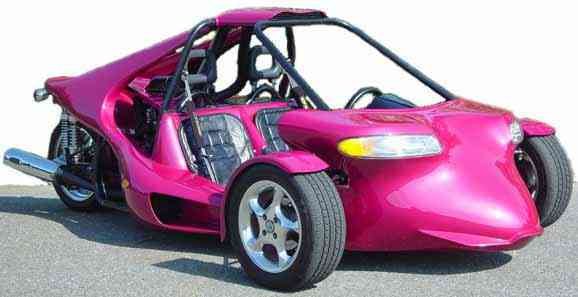
Problems with this 3-Wheeler layout:
The Scorpion’s esthetics are very good.
The T-Rex’s esthetics developed by Paul Dutschman and its fabrication by Daniel Campagna, are both excellent.
The Cyclone is the result of good team work done by students.
Also, the G-Max is hard work done by a single enthusiast.
But despite the imagination, patience and hard work of these people and despite the capabilities of their 3-Wheelers, this 3-Wheeler group presents problems:
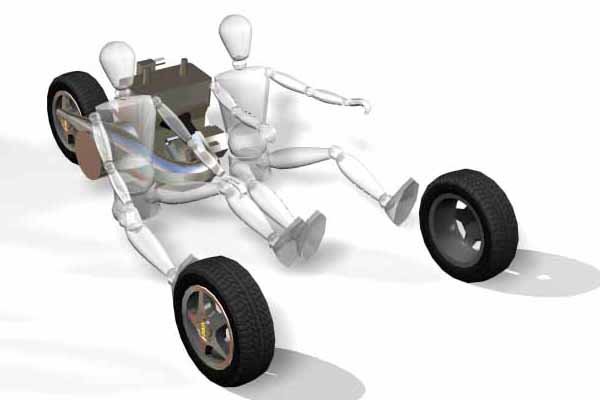
1) Mechanical design aspect:
During forward collisions, the engine at the rear pushes the passengers in the back and tends to crush them against the obstacle. It’s the same as for mid-engine sports car and Formula 1 race cars. So like for these cars, the passenger protective structure must be designed to hold back the rear engine in case of forward collisions, in order to insure their safety.
2) Marketing aspect:
These 3-Wheelers sit their passengers side-by-side in bucket seats and hold them back with safety belts in a protective structure. Also, these 3-Wheelers must be quite wide and low in order to present a safety margin against rollover. So these vehicles are similar to race cars like Ford Formulas , Indy Formulas or Formula 1s, considering their passenger layout. Thus, even though they may legally be considered as motorcycles in the USA and Canada, they have little in common with motorcycles and snowmobiles. So it’s not obvious that these 3-Wheelers will attract the motorcycle and snowmobile consumers.
3) Stability in curves aspect:
The engine and transmission constitute a heavy group of components at the back of the vehicle, close to the rear wheel, that does nothing to avoid rollover in curves at high speeds.
 Worse, the vehicle may have to accelerate strongly and turn at the same time, for instance at a road crossing like to the right.
Worse, the vehicle may have to accelerate strongly and turn at the same time, for instance at a road crossing like to the right.
In this case, weight is transferred to the rear due to the acceleration, which increases the weight on the rear wheel.
With all this weight on the rear wheel, the acceleration may be even stronger so that the interior front wheel can lift off the ground and cause a rollover in front of the incoming traffic as illustrated:
A skilled driver may keep control and even have fun lifting off one of the front wheels of the Scorpion or the T-Rex, as shown below. But a beginner or even an average rider may be surprised and may be incapable of avoiding an accident.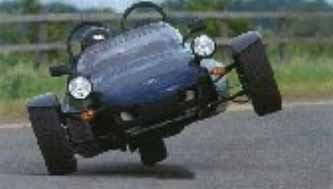

4) Road holding aspect: In order to increase stability in curves, the designer of such a 3-Wheeler may move the passengers forward to bring the center of gravity closer to the two front wheels, that do the work to avoid rollover in curves.
In order to increase stability in curves, the designer of such a 3-Wheeler may move the passengers forward to bring the center of gravity closer to the two front wheels, that do the work to avoid rollover in curves.
But this has two consequences:
First, the two front wheels have to be moved farther apart to insert these passengers, so the vehicle has to be very wide. This explains why such 3-Wheelers are typically as wide as a Cadillac.
Second, if the passengers are moved forward, weight is removed from the rear wheel. So the powerful motorcycle engine can spin this rear wheel and cause the vehicle to spin around, even more so on wet pavement.

This can happen when accelerating in a highway entrance or exit. It can also happen when leaving a street intersection like at the right:
Someone reported to us that he was the passenger of such a 3-Wheeler that spinned around when accelerating straight ahead:
In order to accelerate more rapidly, the driver shifted rapidly from first to second to third gear, without releasing the accelerator (Power shift).
When passing from 2nd to 3rd gear, the engine increased its RPM rapidly so that when the clutch was released, the engine inertia was able to spin the rear wheel and spin the 3-Wheeler around.
The Morgan Trike of the 1930’s also was a rear-drive. It was known to exhibit this problem on wet roads, with an engine less powerful then the ones of today’s powerful motorcycles and 3-Wheelers.
A skilled driver may have fun turning fast enough to have his vehicle wheels skidding sideways. But one certainly has to be skilled to detect the moment when the rear end of such a 3-Wheeler will let go and start spinning the vehicle around. Here again, a beginner or even an average rider may be surprised and may be incapable of avoiding an accident.
In practice with this rear-engine and a single-rear driving wheel concept, designers have to accept an in-between compromise, both limiting ground traction when accelerating and limiting stability in curves.
The problem with this final solution is that both the risk of rolling over in curves and the risk of spinning around may not be eliminated.
Conclusion:
This 3-Wheeler component layout with rear-engine and single-rear driving wheel:
– Offers a great opportunity to drive a high performance vehicle offering Formula 1 sensations.
But despite its performances in curves and accelerations, it also presents problems:
– The chassis must be designed to hold back the rear engine in case of forward collisions.
– The 3-Wheeler is legally a motorcycle, but it does not look like one for motorcyclists.
– If not well designed, the vehicle may rollover when accelerating while turning.
– And the powerful engine can spin the rear wheel and cause the vehicle to spin around,
For safety’s sake but also to avoid future litigation problems, a serious manufacturer of such a 3-Wheeler should make sure that his clients are aware of these problems before driving off in one.
